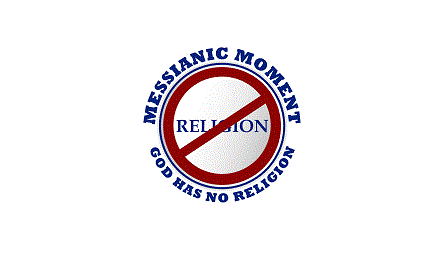Today I would like to share a message that I had given every Yom Kippur service when I was still living in Northeast Philadelphia and attending Beth Emmanuel Messianic Synagogue. For about 2 years we didn’t have a Rabbi and the Council members (of which I was one) kept the temple going, with me serving (pretty much) as Rabbi-pro-tem. The following is an updated version of the sermon I had been giving on this day.
If you prefer to watch a video, click on this link: Watch the video.
There is an undeniable relationship between Yom Kippur and Passover, and together they provide total atonement which allows us to have life everlasting. Yeshua is called the Lamb of God, the Pesach Lamb, and by means of his death and the blood he shed, we can find atonement for our sins. But, it wasn’t just as the Passover lamb that He accomplished this.
It’s important to know that the sacrifice of the Passover lamb, as we read of it in Exodus, Chapter 12, was not a sin sacrifice: it was a thanksgiving sacrifice. And the blood was not a sin atonement, but rather a kippur, a covering, which was meant to identify the people of God. It was spread on the sides and over the doorway of the house and as the identification of God’s people, it protected those people from being killed by the angel of death.
The blood from the sacrificed lamb on Passover provided protection from physical death for the people of God, and today Yeshua’s blood not only identifies us as God’s people, but also protects us from spiritual death. Yeshua’s sacrificial death may have occurred on Passover but is actually what the sacrifice of the Yom Kippur goats is all about.
The Yom Kippur goats (the one killed and the one released) together provide for our atonement (Lev. 16:9-10.) The scapegoat (which is the one released into the desert) had the sins of all the people transferred to it before being released into the desert, or as the Bible tells us, to Azazel. Let’s take a moment and talk a little about Azazel:
- The Talmud interprets this word to mean a steep mountain, and for many years the scapegoat was not released into the desert but instead was thrown off of a steep mountain;
- In the Book of Enoch, Azazel is a fallen angel. Of course, it is unthinkable that we would be told by God to sacrifice a goat to a god-like satyr in the desert;
- According to Rabbi Hertz, the Late Chief Rabbi of the British Empire, in his 1965 edition of the Chumash, Azazel is a rare Hebrew noun that means “dismissal”, or “entire removal”. The transference of the sins of Israel by the Cohen HaGadol onto the goat released into the desert symbolized the total removal of sin from the community of God’s people.
I had always wondered why we needed two goats. If all the sins were removed by the scapegoat why kill another one? It’s because sin can only be forgiven by the shedding of blood (Leviticus 17:11) so the goat’s blood had to be shed. That still leaves me with the question, what did the scapegoat represent?
The scapegoat released into the desert represents our T’Shuvah. It represents our willingness to let go of our sinful desires and remove them totally from our lives. That is why all the people were present when the goat was released. It meant that we all were giving up our sinful ways and desires.
Atonement is a five-step process:
- You commit a sin (after all, without sin there is nothing to be forgiven for);
- Recognizing and taking responsibility for that sin;
- Doing T’shuvah (repentance);
- Shedding innocent blood to atone for the sin, and finally
- Asking forgiveness from God by means of the first four steps we took.
Yeshua’s sacrifice was more than just as the “Passover Lamb”; his death fulfilled the meaning of the two Holy Days most associated with freedom from both physical and spiritual death: Passover and Yom Kippur.
On the execution stake, Yeshua took upon himself all our sins just as the Yom Kippur scapegoat does, and when he died, just as the scapegoat sacrificed to Azazel, he carried them not just into the desert but beyond the grave. He also fulfilled the role of the goat sacrificed on the altar, the one whose blood atoned for the sins and made it possible for God to forgive us.
The blood of the Passover lamb gave protection from death and the Yom Kippur blood allows forgiveness of sin. Passover and Yom Kippur, although two separate Holy Days, through Yeshua have become spiritually one and the same thing.
In the Acharit HaYamim (the End Times) when Yeshua returns and we are all gathered up into the clouds with Him, then will the ultimate fulfillment of both of these festivals be realized. Yeshua is both the Passover Lamb and the Yom Kippur scapegoat. When He said He was the beginning and the end it meant more than just some timeline: he is the beginning of our eternal life and the end of our sin.
Praise God for his goodness and mercy, and give thanks to Yeshua, ha Maschiach for his sacrifice so that we could all be saved.
Thank you for being here and please subscribe and share me out to friends, family, and anyone seeking to know the Lord and Messiah better.
Until next time, L’hitraot and may you have an easy fast.
